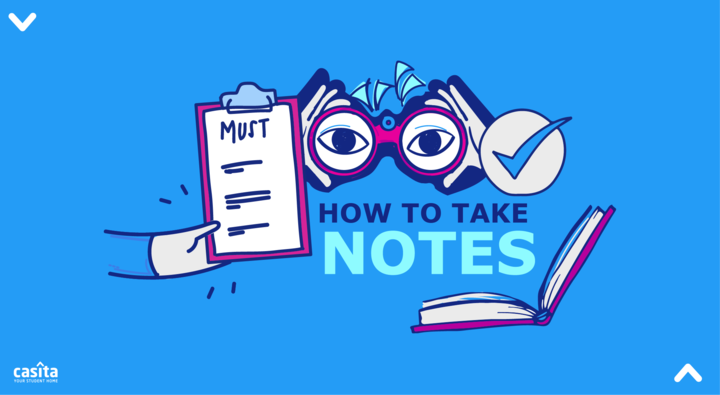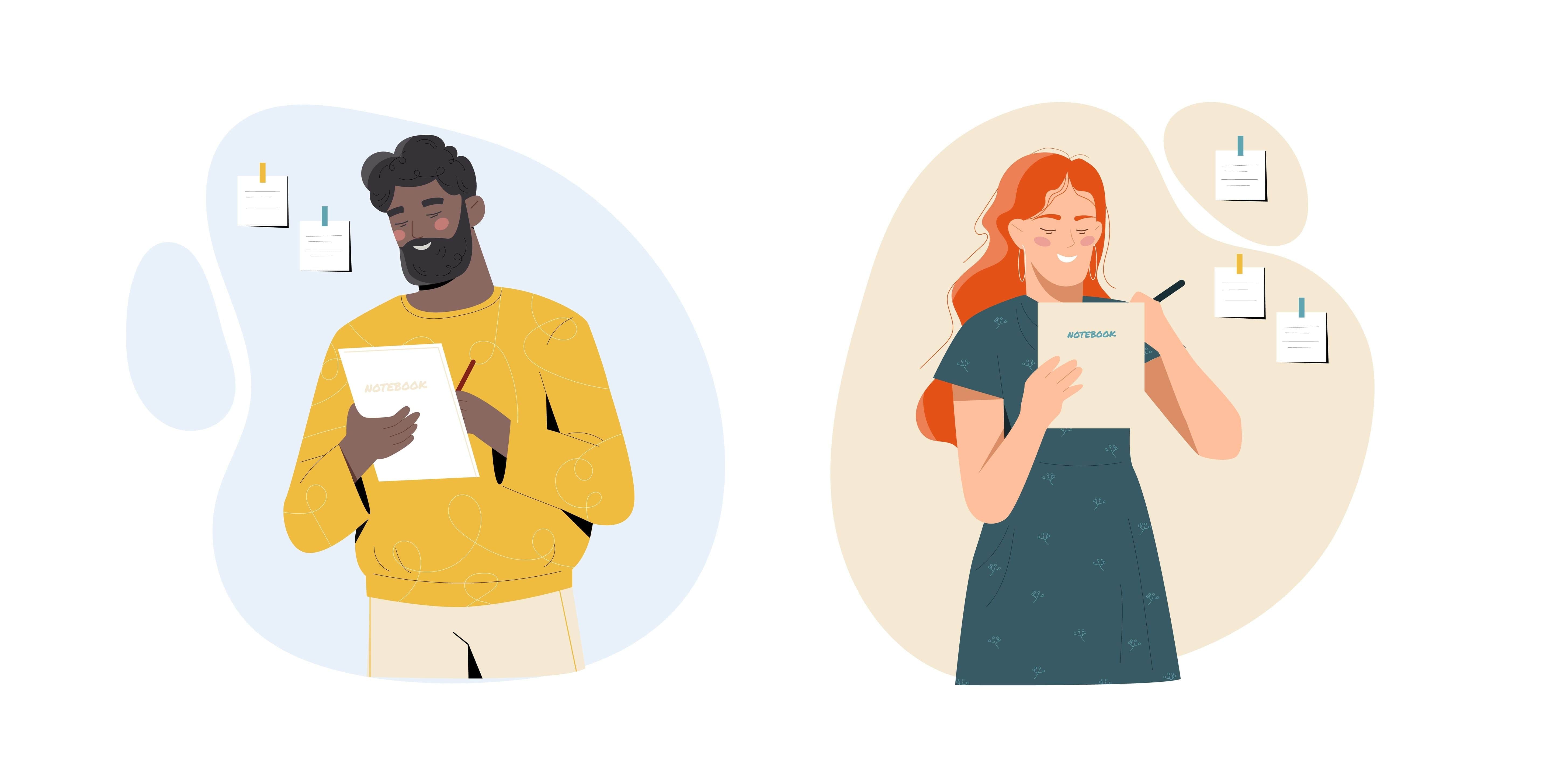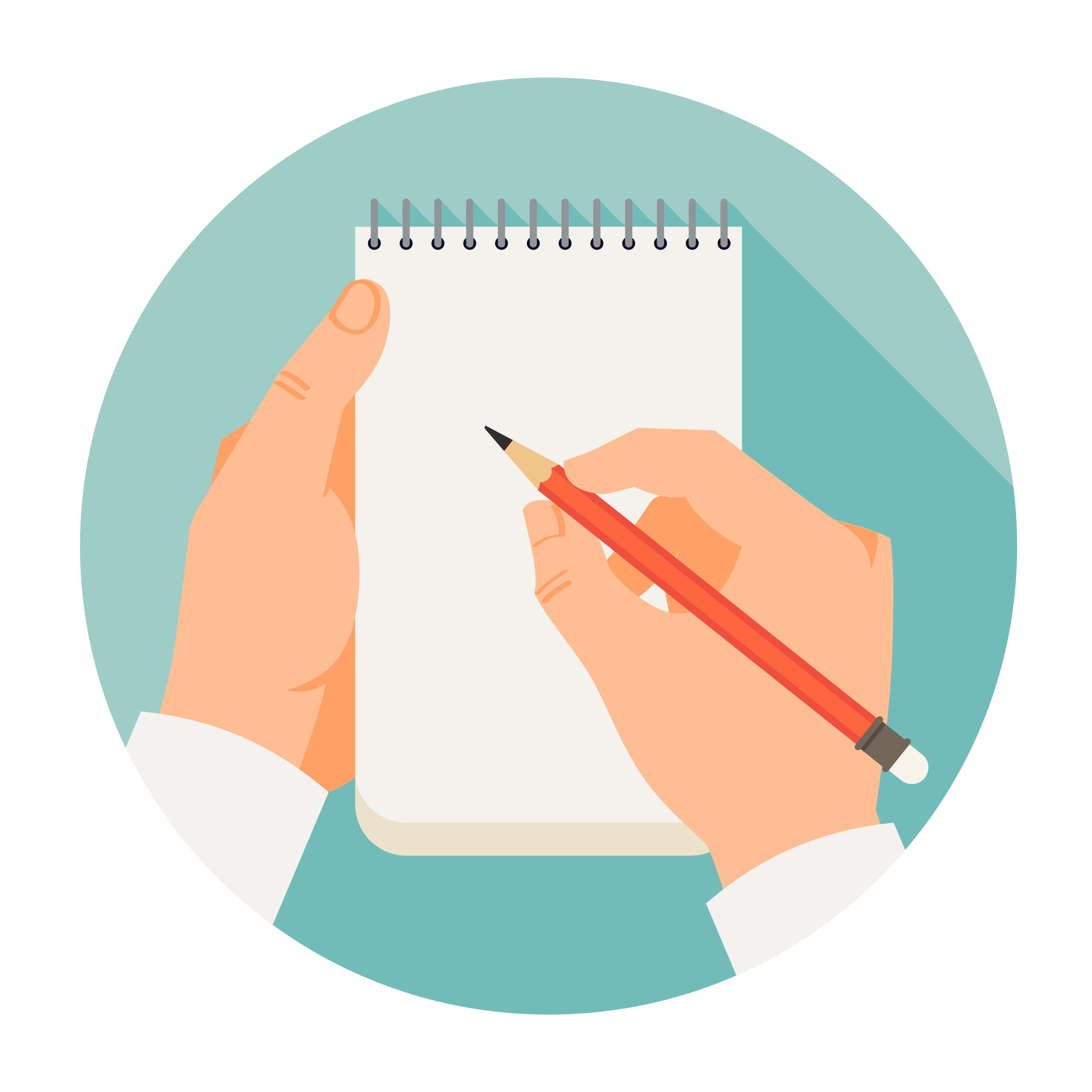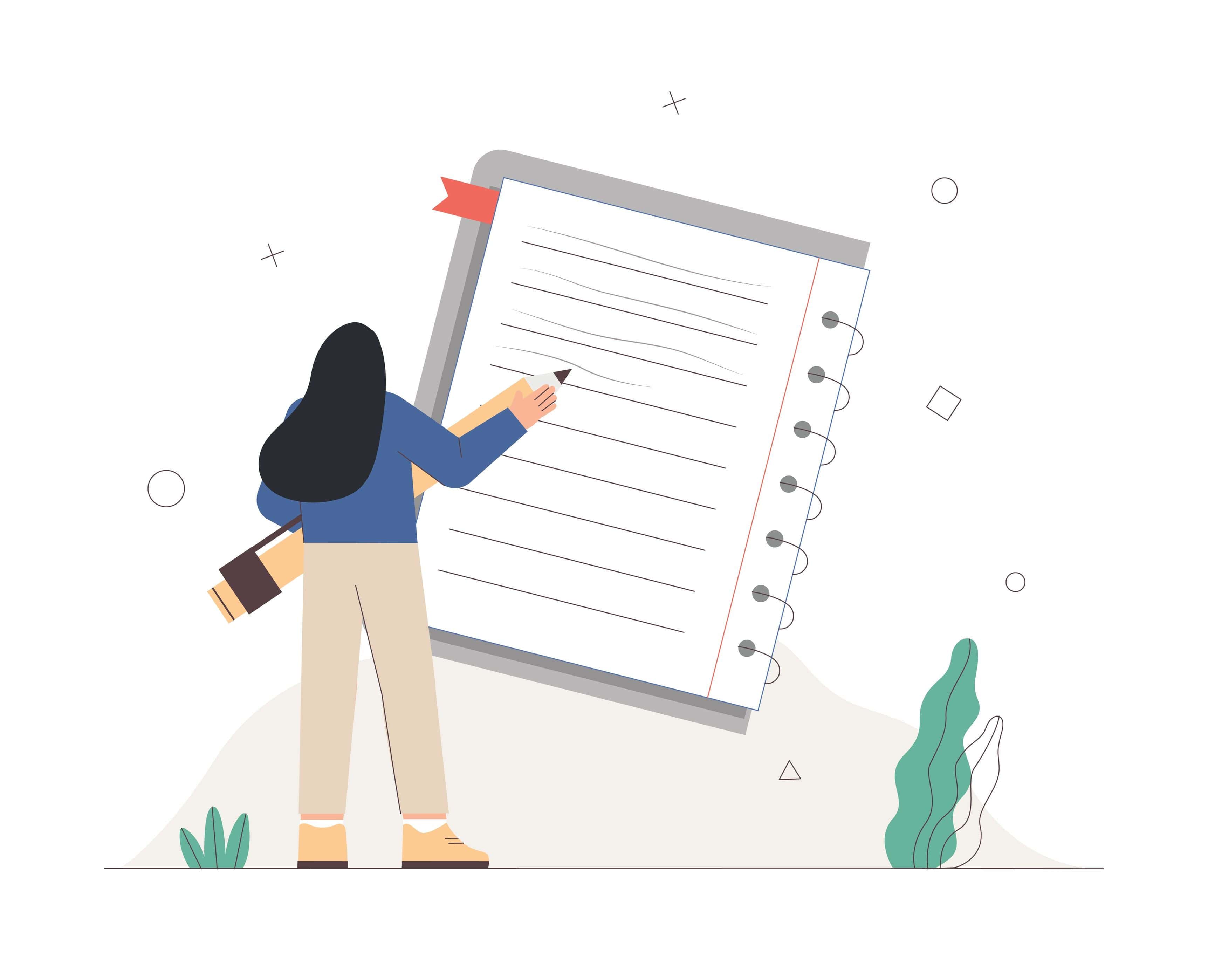How to Take Notes Effectively
Tips and Advice
8 mins read
Share

Updated at: 16 December, 2024
Published at: 26 February, 2023
By Hagar Samir
How to Take Notes Effectively
Tips and Advice
8 mins read

Updated at: 16 December, 2024
Published at: 26 February, 2023
By Hagar Samir
Share
One of the most effective ways to study, understand, and remember what you learn in class is to take notes in the classroom. However, the “anything will do” statement certainly does not apply here. You have to take effective notes in order to grasp your curriculum and study in a way that eventually gets you an A! Better notes will help you develop meaningful learning skills and lead to less stress when exams come around!
So, how to differentiate between good and bad notes? While studying, if you find yourself lost, not able to understand what is in your books, and your notes are not helping, then you probably didn’t write good notes, and your student skills regarding notetaking need improving! Also, this has nothing to do with your handwriting; it’s all about how your notes are formed and structured!

Paper Notetaking versus Digital Notetaking
With the huge advance in technology, many find it easier to take notes on their computers, mobile phones, or tablets. So, is there a difference?
Paper Notetaking
Paper notetaking is using a pen and paper in order to write down the notes you have. It has been used from the very beginning and has proven to be very effective! However, in order to get the best results, you have to do it right. Many people write notes and end up not getting anything because they didn’t use the right method for them.

Digital Notetaking
Digital notetaking is a combination of techniques that allow you to take and store your notes electronically. It ensures you never have to deal with a disorganised desk or a missing note! You can always sync these notes to your account in order to keep them in a safe place, allowing you to access them whenever you want or need them.
It has been proven by many researchers that paper notetaking is much more effective than digital notetaking. It’s a slower task, so students have to be more selective in what they’re writing. Also, there is something about writing the words themselves by your hand that makes it easier for your brain to remember.
Why Are Notes important?
So, really, why are notes that important? And why do all teachers say that it has a huge effect on the student if he doesn’t take notes? Let us tell you!
Improves Student Skills: By taking notes, you will be able to remember more information and therefore improve your skills as a student!
Increases Concentration: It ensures you are actively listening to what the teacher is saying.
It will help you make the connections between the topics.
It requires you to think and focus more on what you’re writing.
How to Take Notes Effectively
There are several methods of taking notes, and this variety is really important! You can use all of them until you finally find which method is more suitable for you. You can even use different methods for different subjects. For example, some subjects require a different approach than others, and that is why experimenting is important! Let’s take a look at the several note-taking techniques you can use to start taking better notes in class!
The Cornell Method
The Cornell Method was designed for students at Cornell University by professor Walter Pauk. It helps organise class notes into easily digestible summaries. It is also effective because it has the main points, details, study cues, and summary all written in one place! The Cornell Method also allows you to pull out major ideas and concepts.
Say you have a piece of paper in front of you right now; in order to write down notes the Cornell way, you will have to divide your paper into three sections: a margin to the left, a summary section on the bottom, and a main in-class note section. You start by using the main notes section to take notes during class. The next step will be the margin, where you write down things you’ll need to remember. You can also use this section for vocabulary words and study questions. Finally, in the summary part, you summarise your notes in your own way and highlight the main points.
As effective as the Cornell Method is, it is certainly not for everyone! The Cornell Method is not suitable for lectures with heavy terminology and statistics, and it requires summarising information immediately following the lecture. You will also need to prepare the notes pages before the lecture starts.
The Mapping Method
This is a more visual way to organise your class notes. It is used in both the education and business worlds. The Mapping Method can help eliminate the fuzziness around highly involved topics. It is useful because it connects big ideas and themes and discovers how they flow from each other. Visual learners tend to prefer this method over others!
You start by writing the main topics; the main topics branch out into subtopics with detailed information about each. For each subtopic, write a heading that is suitable for it. Then, write any important notes underneath each subtopic. The final result should be a web or hierarchy of information that is similar to a flowchart, which will make it easier for you to understand. You can also use colours and drawings as much as you like!
You will need to be aware of the space you’re taking in order to fit all notes within a single map. You will also need to revise these notes to avoid any kind of confusion! The Mapping Method is not for everyone, as it may be a little time-consuming, and you have to practice it several times in order to have ideas branch from each other smoothly.
The Sentence Method
The Sentence Method is the traditional method of taking notes! It is the simplest and least structured method. This method is particularly useful for fast-paced lectures that cover a lot of content in a short period of time. Doing that, you jot down the main points that help you determine which information is important and which is not. If you haven’t prepared before the lecture, this method is the best one for you!
Each line on the page is a new point and a separate topic. You can also use headings for each main topic to make it easier and avoid any confusion. Start by writing down any important piece of information that the tutor has emphasised; you can put it in sentence form or point form. Start a new sentence for each new detail. You can also use headings to organise points. It is an uncomplicated way of recording information. A huge advantage of this method is that it can be transformed into any other method post-lecture!
However, this method doesn’t provide the visual structure that many people need. It may also be difficult to review later if the material is disconnected. This method works as a last resort when the content is all over the place, and you have no time to prepare for other methods! It is not suitable for content with graphs and charts.
The Charting Method
Using columns to organise information, this method is useful for lessons that cover a lot of facts or relationships between topics, including fact and data-heavy lectures. This method provides an efficient way to keep up with the material as it is based on numbers and keywords. It is important for content that requires memorisation and being aware of facts and statistics. It is also very useful for summarising lectures before exams!
You start by determining what topics the lecture will cover, then divide the page into multiple columns, each with a relevant keyword which you will use. Write these notes down in their relevant columns as subpoints. By doing this, you will be highlighting only the key pieces of information for each topic.
This method, however, is not suitable for lectures that don’t provide the structure beforehand, and it will only waste your time during the lecture. You will need to prepare the columns and the paper beforehand. It is also difficult to use this method during lectures or meetings with heavy discussions.
The Outlining Method
Many people naturally choose this method because it is a linear one that is organised with headings and bullet points and written straight down the page. An outline will organise your lectures by main points, which will allow you room for examples and details! It gives you visual, clean, and organised notes that could easily be converted into review notes or questions that will benefit you before exams!
The title of the main topic is usually written on the far left top of the page. You can then add the topics that the lecture deals with, followed by the subtopics of each topic. During the lecture, begin your notes with a single bullet point, then indent the subtopic in the far right. You can then list any details you feel relevant under each topic!
This method can be a little difficult to use if the lecture contains a lot of graphs and diagrams. It requires the content of the lecture to be highly structured as it may lead to too much note-taking, resulting in irrelevant information. This can cause confusion for you as you study. However, it may be useful if you’re still testing the waters and trying to see which method is best for you!
The Boxing Method
Those who are visual-dominant learners will love this method! Boxed notes allow learners to see how ideas are connected and flow from each other. It helps improve clarity and brevity because you will need to condense notes into boxes! It is more suitable for those who prioritise the aesthetic look of the notes and use their creativity to remember their notes!
Similar to the Charting Method, you start by dividing your paper into two columns. You can then add topic headers for each main idea and expand your notes directly under them. After completing the notes under each column, draw a box around the entire note section and header. The final page will appear as various boxes containing each topic and its notes. You can draw arrows connecting relevant topics with each other or leave them as they are.
This method is not suitable for people who want a quick hierarchical solution. You will need to understand the topics beforehand in order to know how they’re connected. If you’re someone who gets distracted easily, the boxes and drawings can be a huge distraction for you! There are topics that cannot be assigned to certain boxes, so you have to know how it works in advance.
Taking notes in any way is important because it will help you understand and grasp the subject more. It doesn’t really matter which way you choose, it’s all preferences and it depends mainly on how you study and which field you’re in. As long as you make the most of it, you’re good! While you’re at it, you can also check out our blog on how to write an A+ research paper!
Frequently Asked Questions
1. What do people mean when they say the five R’s method?
The five R’s help people take notes easier; this method means:
Record your notes during the lecture.
Reduce and summarise these notes after the lecture.
Recite.
Reflect.
Review.
2. How do I take notes without losing focus?
In order to take notes without losing focus, you have to choose the most suitable method for you. There are several methods you can choose from according to your comfort!
3. Is it better to type or write out notes?
Research has shown that writing out notes is better! Using pen and paper helps you focus more and makes you remember what you wrote.
Tips and Advice
By Hagar Samir
Share
Tips and Advice
Updated at:
Published at:
By Hagar Samir
Share



